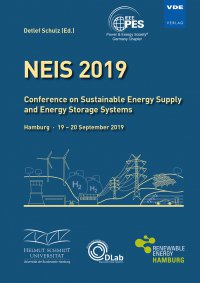Increasing Tightness by Introduction of Intertemporal Constraints in MILP Unit Commitment
Conference: NEIS 2019 - Conference on Sustainable Energy Supply and Energy Storage Systems
09/19/2019 - 09/20/2019 at Hamburg, Deutschland
Proceedings: NEIS 2019
Pages: 6Language: englishTyp: PDF
Personal VDE Members are entitled to a 10% discount on this title
Authors:
Zimmermann, Tobias ; Erichsen, Gerrit; Kather, Alfons (Institute for Energy Systems, Hamburg University of Technology, Hamburg, Germany)
Cors, Tobias (Institute for Operations Management, University of Hamburg, Hamburg, Germany)
Abstract:
Flexibility requirements of controllable units in energy systems increase with high shares of volatile renewable energy (VRE) production. In this work, an existing unit commitment optimisation, formulated as mixed-integer linear problem (MILP) for energy systems is extended with intertemporal constraints to achieve a more realistic and detailed portrayal of the producer park against the backdrop of need for higher flexibilities. Those extensions mainly consider start-up times as well as minimum operating and standstill periods from a technical perspective, which are associated with rising complexity as well as tightness of the MILP. A small-scale energy system designed as a single copper plate with island restrictions, consisting of a conventional power plant, a short-term and a long-term energy storage and a VRE producer park is used to investigate the effects of the integrated intertemporal constraints. The study shows, that unit commitment is widely influenced by these extensions and the scattering of units, observed in the reference system without these extensions, is eliminated. The number of starts and operating hours therefore results in a more realistic unit commitment. Even though the equation numbers of the MILP increases drastically, the computation time is lowered significantly.


